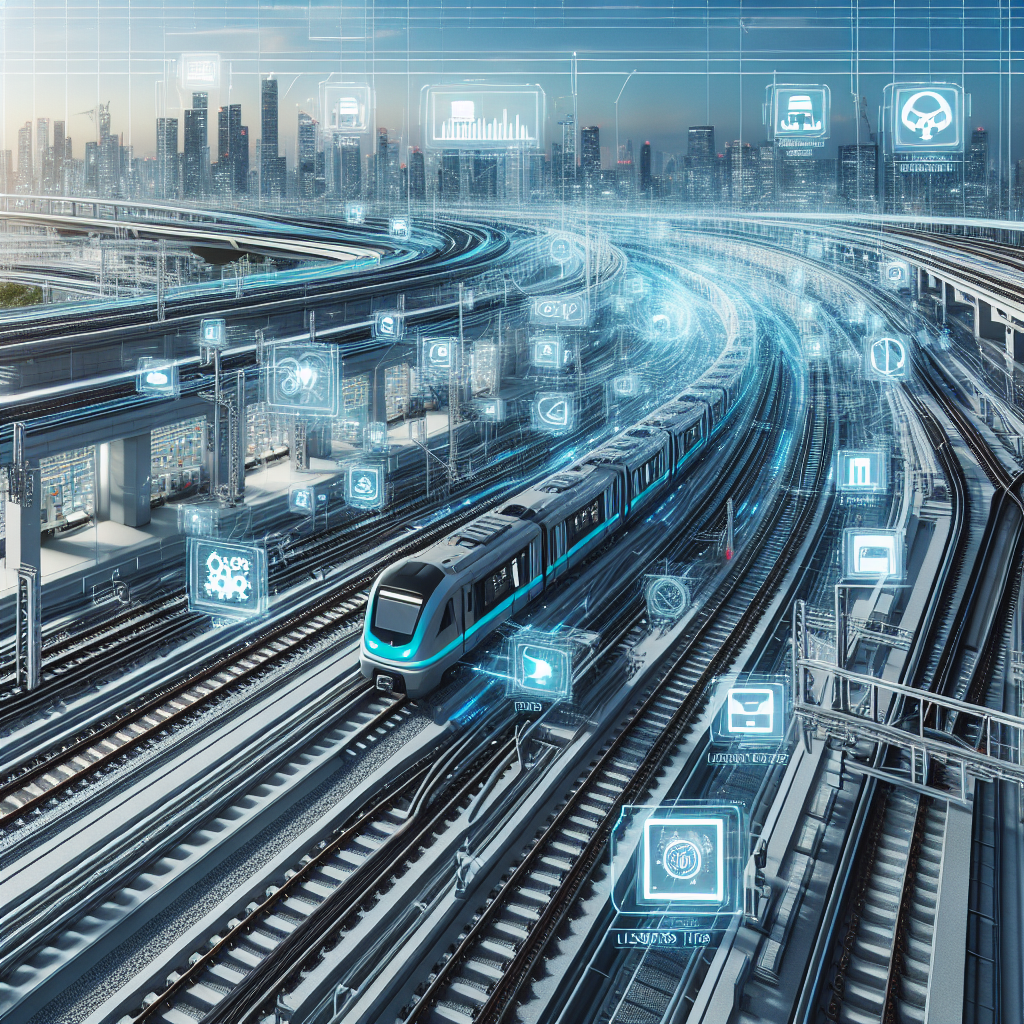AI-Powered Smart Railways: Improving Operations and Safety in Logistics
The railway industry has been a vital part of transportation for centuries, providing a reliable and efficient mode of moving goods and people across long distances. With the advancement of technology, railways are now being transformed by artificial intelligence (AI), leading to the development of smart railways that are revolutionizing operations and safety in logistics.
AI-powered smart railways incorporate a range of technologies such as sensors, data analytics, and predictive modeling to optimize operations and enhance safety. By leveraging AI, railways can improve efficiency, reduce costs, and minimize the risk of accidents, making them an essential component of modern logistics systems.
Improving Operations
One of the key benefits of AI-powered smart railways is the optimization of operations. AI algorithms can analyze vast amounts of data collected from sensors installed along the railway tracks, train engines, and other equipment to identify patterns and trends. By analyzing this data, railways can predict equipment failures before they occur, allowing for proactive maintenance and preventing costly disruptions to operations.
AI-powered smart railways also enable real-time monitoring of train movements, allowing for better coordination of schedules and reducing delays. By using AI algorithms to analyze historical data and predict traffic patterns, railways can optimize routes and schedules to minimize travel time and maximize efficiency.
Additionally, AI can be used to automate certain tasks, such as switching tracks and monitoring train speeds, reducing the need for manual intervention and improving overall efficiency. This automation can also help reduce the risk of human error, leading to safer operations.
Enhancing Safety
Safety is a top priority in the railway industry, and AI-powered smart railways are helping to improve safety standards. By using AI algorithms to analyze data from sensors and cameras installed along the railway tracks, railways can detect potential hazards such as obstructions on the tracks or unauthorized access to restricted areas.
AI can also be used to monitor train speeds and automatically apply brakes in emergency situations, reducing the risk of accidents caused by human error. By using predictive modeling, railways can identify potential risks and take proactive measures to prevent accidents before they happen.
Furthermore, AI-powered smart railways can improve communication between trains and control centers, enabling real-time updates on train movements and potential hazards. This improved communication can help prevent collisions and other accidents, enhancing overall safety in the railway industry.
FAQs
Q: What is AI-powered smart railways?
A: AI-powered smart railways are railways that incorporate artificial intelligence technologies such as sensors, data analytics, and predictive modeling to optimize operations and improve safety.
Q: How does AI improve operations in railways?
A: AI algorithms can analyze data collected from sensors to predict equipment failures, optimize routes and schedules, automate tasks, and reduce delays.
Q: How does AI enhance safety in railways?
A: AI can detect potential hazards, monitor train speeds, automate emergency braking, improve communication between trains and control centers, and prevent accidents before they happen.
Q: What are the benefits of AI-powered smart railways?
A: The benefits of AI-powered smart railways include improved efficiency, reduced costs, minimized disruptions, enhanced safety, and better coordination of schedules.
Q: How can AI be implemented in existing railway systems?
A: AI can be implemented by installing sensors and cameras along railway tracks, trains, and other equipment to collect data, using AI algorithms to analyze this data, and integrating AI-powered systems with existing railway infrastructure.
In conclusion, AI-powered smart railways are transforming the railway industry by improving operations and safety in logistics. By leveraging AI technologies, railways can optimize operations, enhance safety standards, and revolutionize the way goods and people are transported across long distances. With the continued advancement of AI, smart railways will continue to play a crucial role in modern logistics systems, providing a reliable and efficient mode of transportation for years to come.

